
I-League 2012-13 Review: The Good, the Bad and the Ugly
The 2012-13 I-League has come to an end and Sportskeeda reviews the season by looking back at the highs, lows and controversies of the sixth season of Indian football’s topmost domestic competition.
The Good
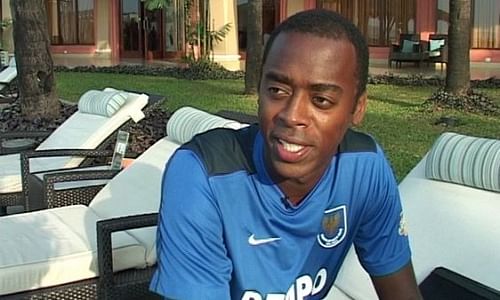
Rohan Ricketts
The best thing about this season was the improvement in the quality of foreigners coming to the league. Prayag United made the headlines early on by recruiting former Costa Rican World Cupper Carlos Hernandez, while Dempo signed former Arsenal and Tottenham player Rohan Ricketts. More consistency, however, came from Churchill Brothers’ Lebanese internationals Bilal Najjarin and Akram Moghrabi.
Clearly, such arrivals raised the profile of the league and sent out a message to many leagues of Asia that playing in India is financially more rewarding, something which S-League legend John Wilkinson also admitted after joining Salgaocar in the winter transfer window. There were more quality arrivals in winter with the most notable one being Spanish defender Angel Berlanga, who joined Sporting Clube, just a month after playing in the Club World Cup for New Zealand’s Auckland City.
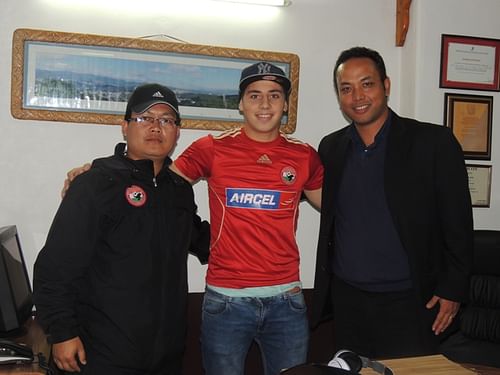
Edinho Junior (wearing the Lajong jersey)
Shillong Lajong’s recruitment of Portuguese teenager Edinho Junior on loan from Blackburn Rovers also can’t be ignored as it gave some more publicity to the I-League and the presence of quality foreigners certainly increased the level of competition. The performances of AIFF’s developmental team Pailan Arrows were also a big positive as unlike last season, the youngsters played an exciting brand of football under Australian coach Arthur Papas
In the past, the AIFF have been criticised heavily for not ensuring adequate broadcasting of the I-League but there was an improvement this time as the new deal with TEN network saw more than 75 matches being telecast LIVE. Fans were also able to watch the matches online from different parts of the world with video highlights also being available like never before.
The Bad
Despite the few positives above, the I-League still continues to be a fading product even after the conclusion of its sixth campaign. The blame has to be shared by the federation and the clubs as they couldn’t work together to market the league better and make it a more attractive package for football fans in the country.
The AIFF didn’t make the league a separate legal entity despite repeated requests from the clubs and even the formation of the IPFCA (Indian Professional Football Clubs Association) didn’t help in this regard. Many clubs didn’t fulfill some aspects of the AFC licensing criteria and very few tried to increase their fanbase, with the ones that have a big following neglecting their followers, and the teams that did’t have a huge fanbase did very little to enhance it.
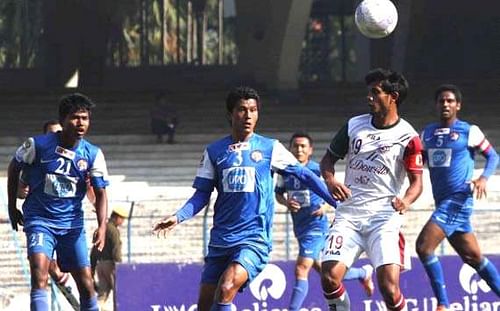
Empty stadiums and afternoon kickoffs remained an unwanted feature of the I-League
(Photo Credit: AIFF Media)
Besides Shillong Lajong and at times United Sikkim, no other club could claim to consistently have full houses for their home matches. A big reason behind it were the odd kickoff times as many matches started at 2pm in the afternoon on weekdays. Even during summer, some games kicked off in the afternoon which risked the welfare of footballers and degraded the quality of football.
There was not much improvement in the quality of stadiums with Mumbai clubs playing their home games in Pune throughout as the WIFA (Western Indian Football Association) were unable to get the Cooperage ready, while Kolkata teams even had to sacrifice the Salt Lake Stadium for the IPL opening ceremony and play in Kalyani, a town outside Kolkata. Despite previous assurances from the Bengal government, new floodlights were only installed as late as mid-March, just in time for the IPL festivities!
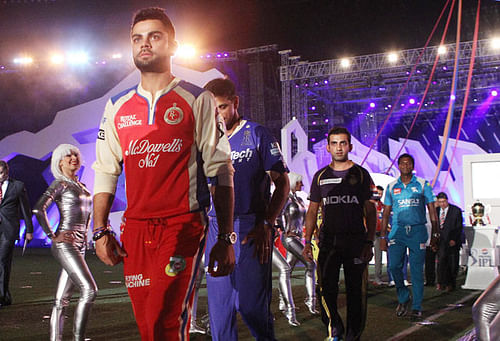
As the league was once again limited to a few centres like Kolkata, Pune, Goa and the North-East, there wasn’t much awareness about the competition in non-I-League venues but maybe that problem will be addressed with the addition of new city-based franchises next season.
The Ugly
While the I-League built a reputation of providing better financial opportunities, question marks were raised about the sky-high salaries because there is hardly any financial return for the clubs. And the fact that many clubs were guilty of not paying their players on time suggests that the huge investment in this season’s I-League is a paradox. The youngsters of Pailan Arrows suffered the most in this regard as they were not paid for months and still the dues are yet to be cleared.
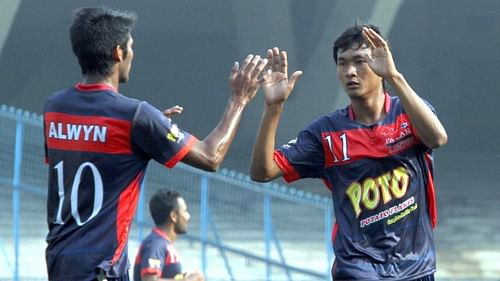
Pailan Arrows players were not paid on time
(Photo Credit: AIFF Media)
The controversy surrounding Rohan Ricketts’ exit from Dempo was also something the I-League didn’t need as it questioned the legacy of the most successful coach in I-League history, Armando Colaco, who was accused of money laundering by the former EPL player and we may not have heard the last on this topic as Ricketts recently wrote on his Twitter profile that he will reveal further on this topic post May 31st.
However, the biggest low-point of the 2012-13 I-League was seen on December 9 2012 when AIFF Player of the Year Syed Rahim Nabi was hit by a stone during the East Bengal – Mohun Bagan derby clash. The catalyst of that incident was the sending off of Mohun Bagan skipper Odafa Okolie for his aggression towards referee Vishnu Chauhan and things got worse as police clashed with fans.

The ugliest incident of the 2012-13 I-League
Mohun Bagan eventually didn’t come out for the second half of that match despite being warned of possible relegation from the I-League. The 124-year-old club was relegated from the top flight but AIFF revoked the decision, citing the huge fanbase of the Kolkata club. Mohun Bagan returned to the league and survived the drop despite a 12-point deduction but the damage was done because the ugly scenes in that derby once again highlighted the flaws in the infrastructure of Indian football as the authorities were unable to handle a crowd of 100,000 in a stadium that only has 1500 seats.